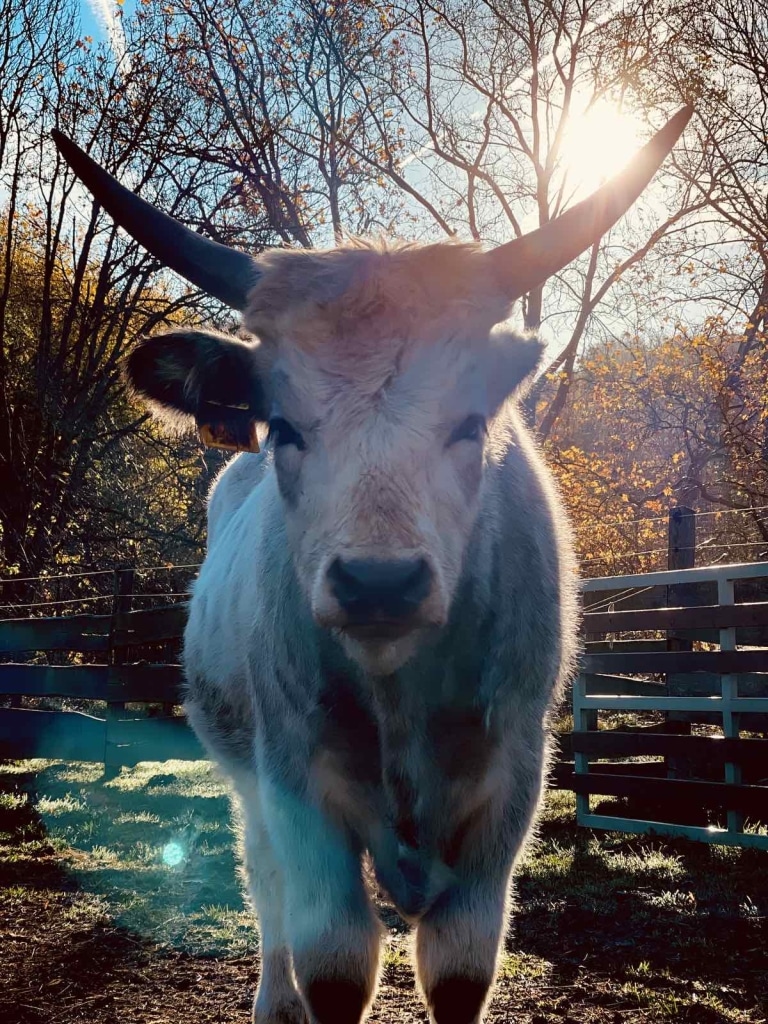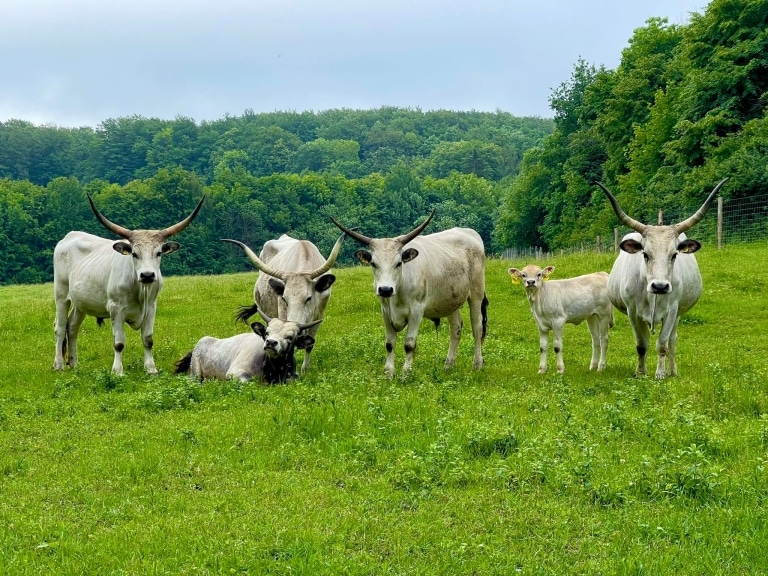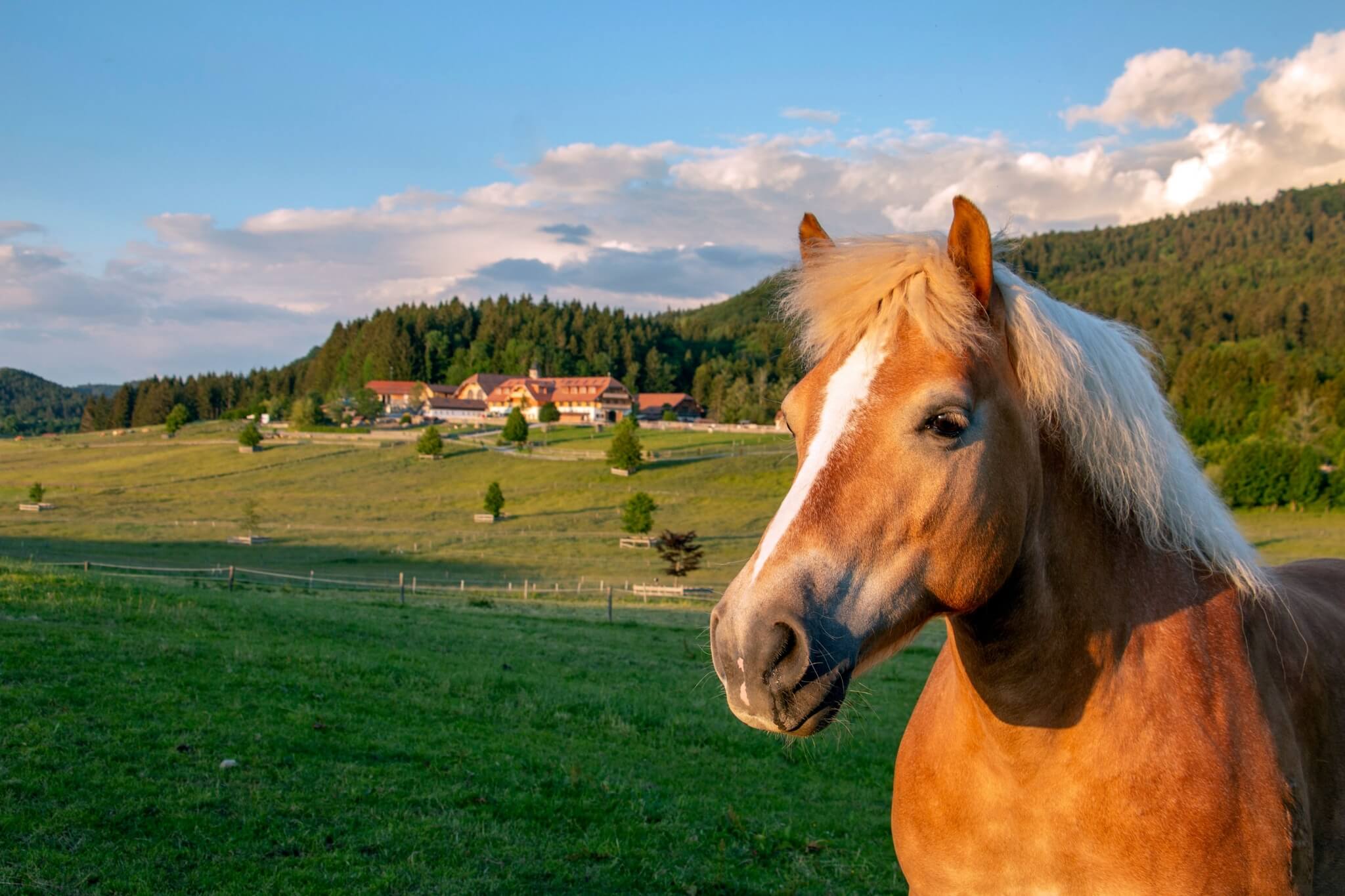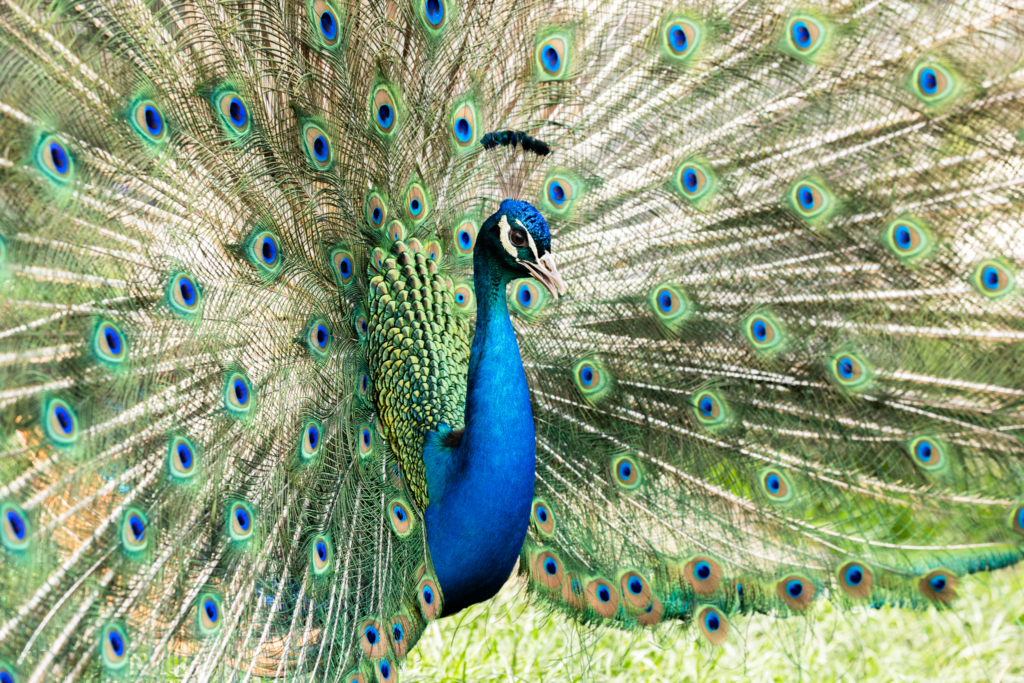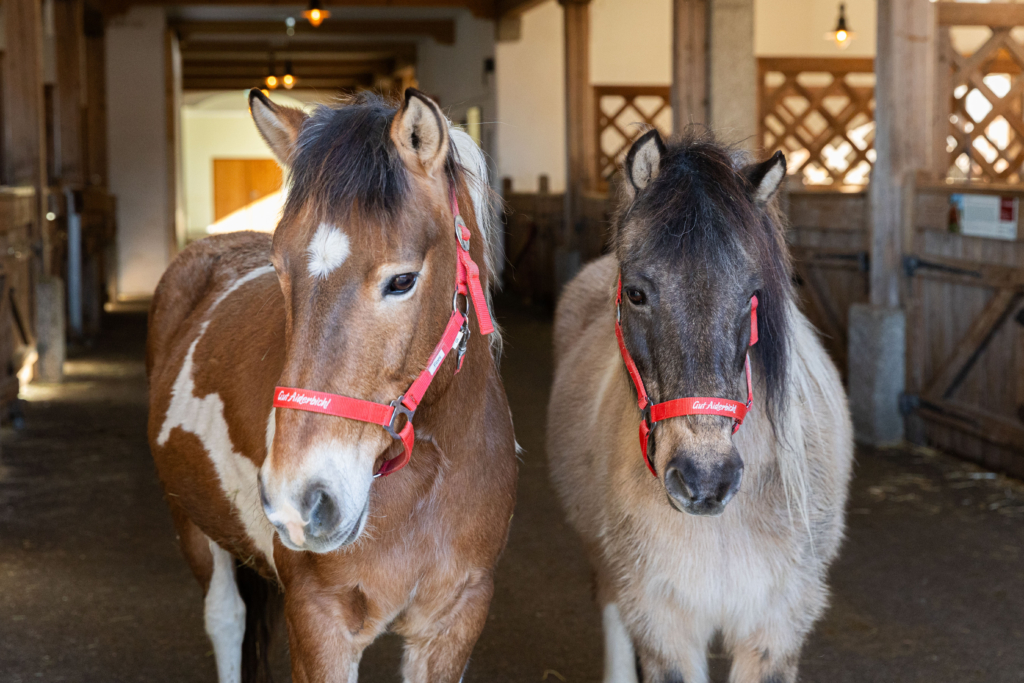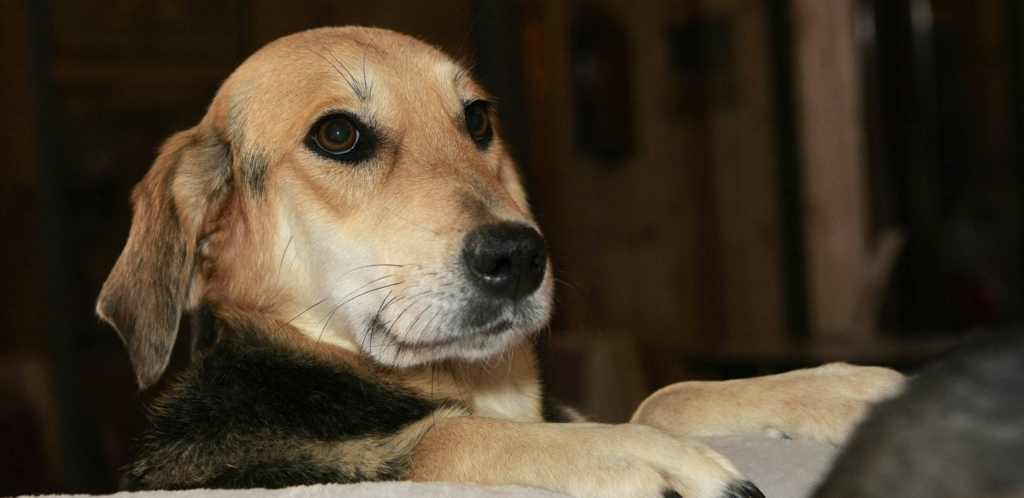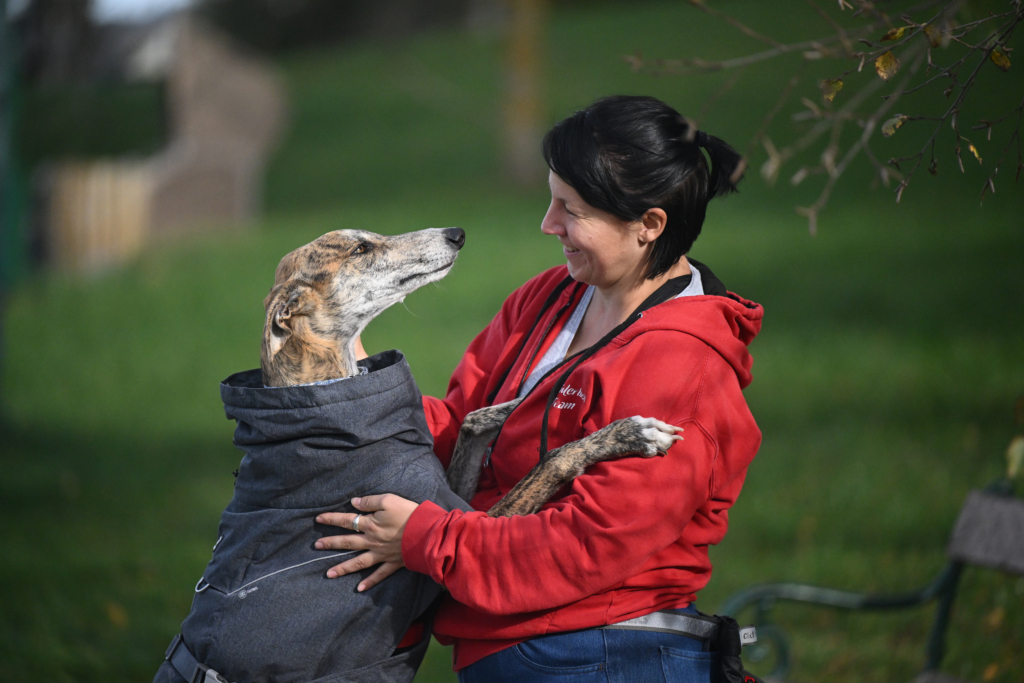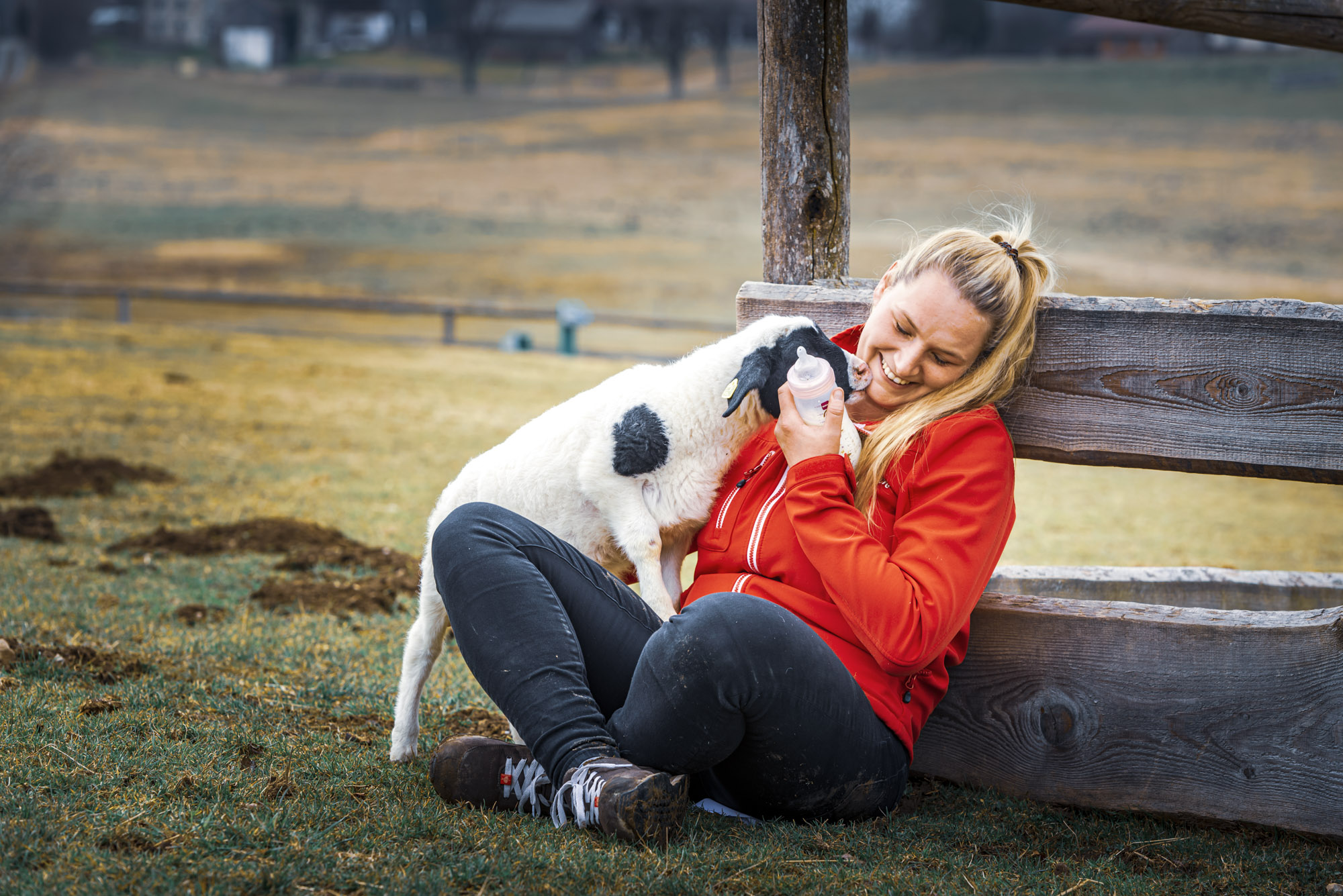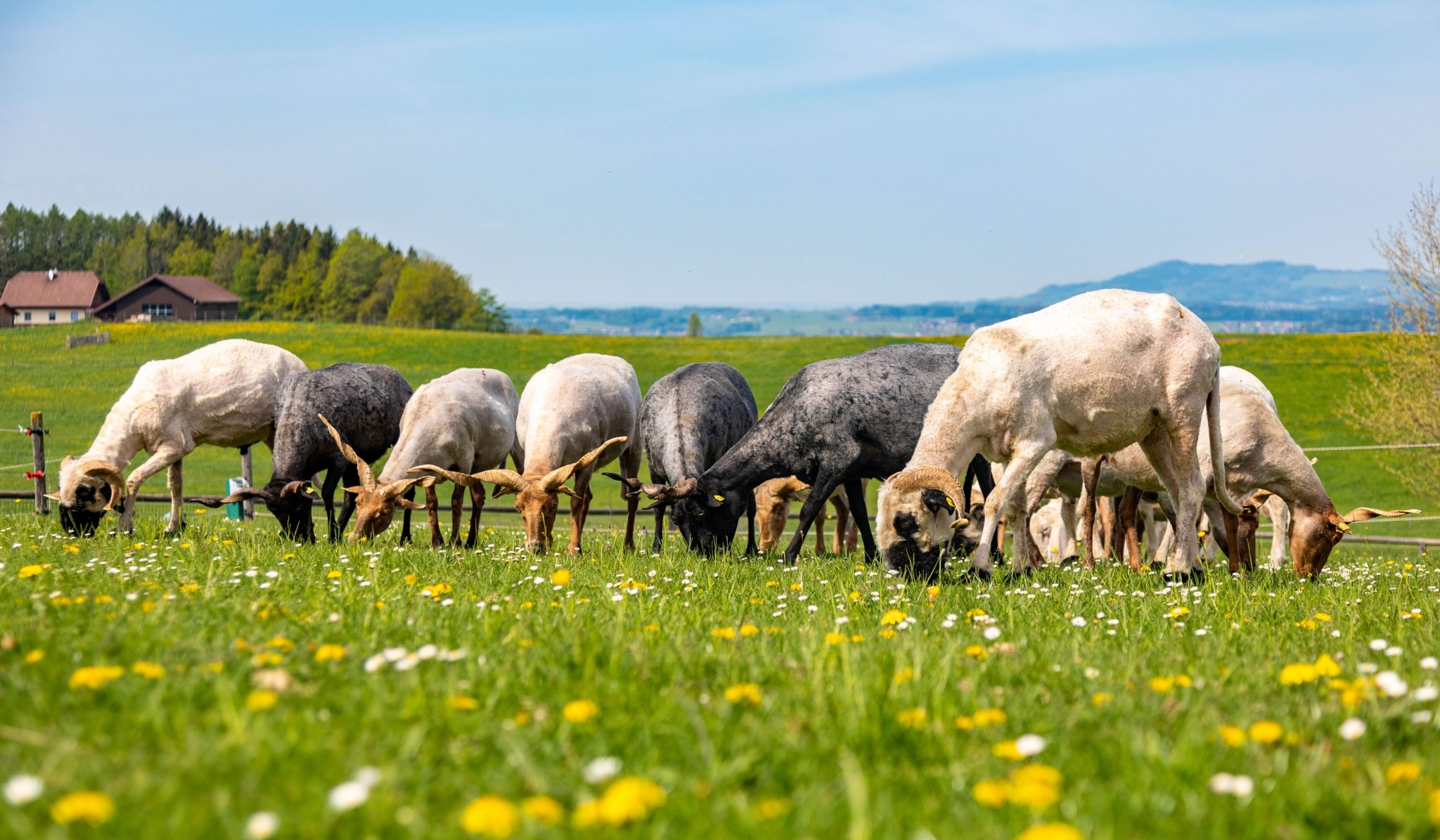
Our commitment to animal breeds threatened with extinction
We give animals a voice
Project: Our commitment to animal breeds threatened with extinction
There are many reasons why many domestic animal breeds are threatened with extinction. What is certain, however, is that industrial animal husbandry and thus also society contribute a large part to this.
The industry often optimizes animals for a higher yield. As a result, "turbo cows", which give more milk than other breeds, are currently predominantly bred. For this reason, classical alpine farming and thus the continued existence of old breeds such as the Tyrolean gray cattle is threatened. Many end consumers also wanted soft sheep wool. Therefore, many old sheep breeds, such as the Zackel sheep, are now endangered.
The same applies to other, animal products that have a direct influence on the continued existence of animal breeds. Gut Aiderbichl has been committed to endangered animal breeds for many years and would like to give them a voice in public.
Our project at a glance
Our commitment to endangered animal breeds
Baseline:
- Old livestock breeds are slowly dying out.
- This means that their genetic material disappears too.
- The natural ecosystem is endangered.
Target:
- We give a voice to animals that have been forgotten.
Our work:
- Many endangered species live on our animal homes, such as the Zackel sheep and the black-nosed sheep.
- We actively conduct public relations work online and on the farms.
Outlook:
- Each year, we focus on a different animal.
"If the climate crisis is Mother Earth's fever, then species extinction is her dementia." (Eckart von Hirschhausen, physician, presenter and climate protection activist).
Our project - the whole story
Our commitment to animal breeds threatened with extinction
We would like to introduce you to some of the endangered animal species that have found a new home at Gut Aiderbichl. They are exemplary for the many endangered animal species that live in Europe and worldwide. They deserve our special protection!
Tiger
The predatory cat with the impressive orange fur lives mainly in forested regions, but also occurs in savannahs. In the forests, the striped fur serves the tigers as camouflage in the undergrowth: by the way, the stripes are as individual as a fingerprint. Most animals living in the wild are currently found in India.
Why are tigers threatened with extinction?
Although the number of tigers worldwide is slightly increasing again, they are still considered a highly endangered species. The main reason for the disappearance of the tigers is man: poachers hunt the majestic animals because of their beautiful fur, or because, especially in China, people promise themselves healing through medicines from tiger bones. Aggravating to it comes that humans destroy also the natural habitat of the tigers ever further. The animals find there hardly more protection or food.
In Europe, the pretty predators live in zoos or circuses. To protect the animals, a ban on wild animals in circuses has already been enacted in many European countries. This development is essential for the protection of the animals. But where to put the animals that have lived in the circus so far? Tamer Markus is also faced with this problem. If his five charges Sandy, Floy, Tango, Roxy and Sonja cannot be housed in a manner appropriate to their species, this could mean their death sentence in the worst case. Gut Aiderbichl wants to help here and is looking for a way out.
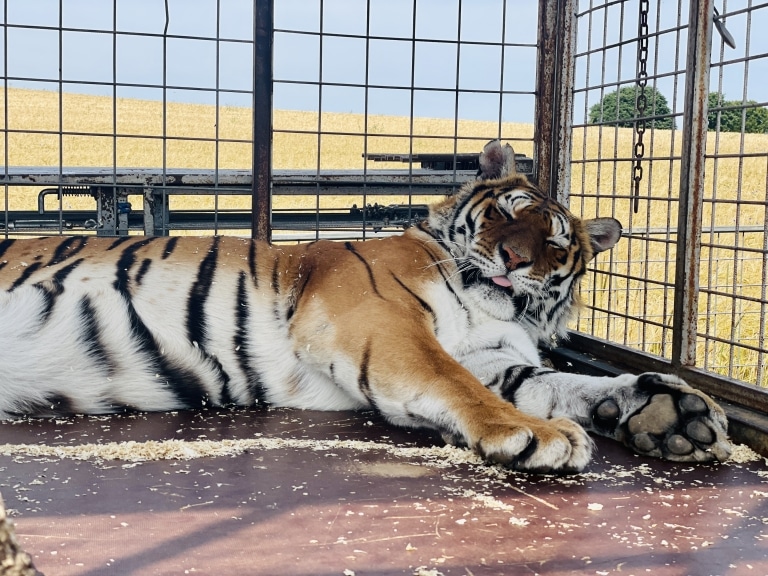
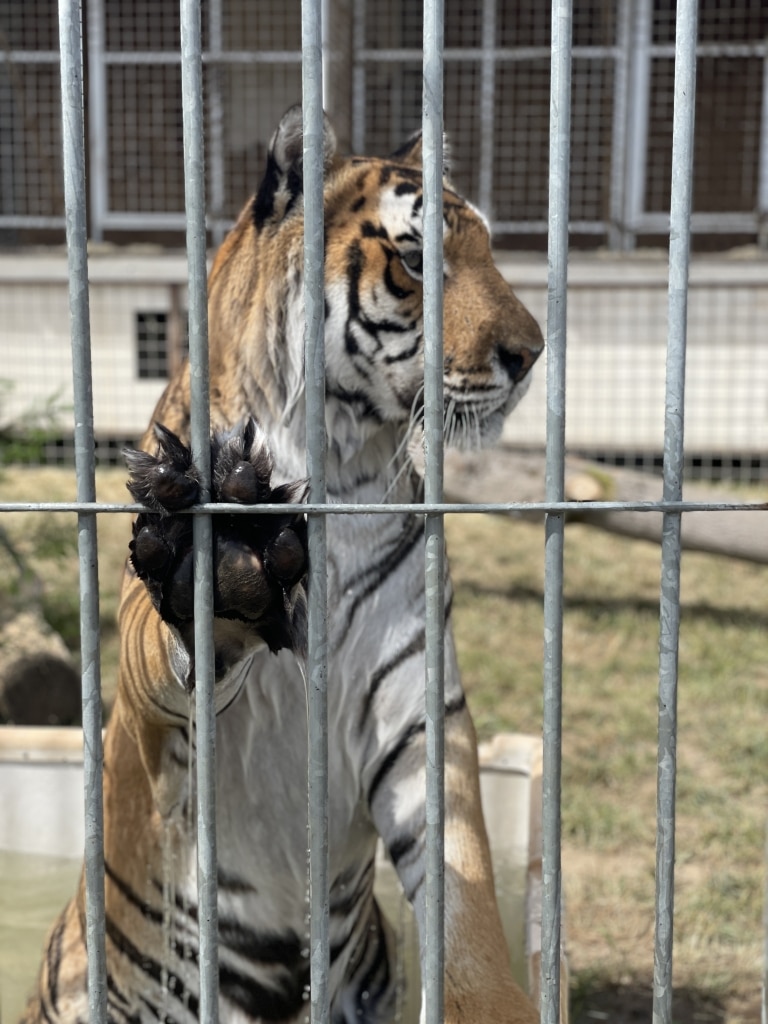
K.u.K donkey (White baroque donkey)
The origin of donkeys goes back to the Baroque period in Eastern Austria and Hungary. In this era, light-colored animals were very popular in aristocratic society. They were considered "bringers of light" and stood for good. Lipizzaners or the White Baroque Donkey conquered the castles of the Austro-Hungarian monarchy. However, it is unclear where the distinctive color genetics come from - donkeys are neither gray nor albinos.
Why are the baroque donkeys threatened with extinction?
The white Baroque donkey was a fad of the Baroque and Rococo periods. After that, the Baroque donkey was considered lost until 1986, when Prof. Fritz Dietrich Altmann rediscovered some specimens in the Herberstein Zoo. Worldwide, there are only a few hundred left of Austria's only recognized donkey breed.
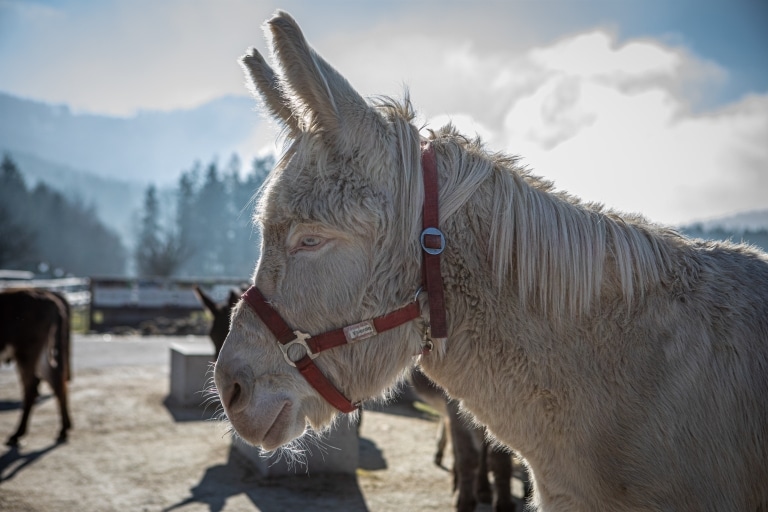
Zackel sheep
Their homeland is in Hungary since the 9th century, where they were the most common breed of sheep until the 18th century. They are the trademark of the Hungarian Puszta. There are two color varieties of the Zackel sheep - white and black. The special feature of the Zackel sheep is the screw-shaped (corkscrew-like) horns, which are V-shaped in the Hungarian type. The Zackel sheep is the last genus of sheep with screw horns.
Why are the Zackel sheep threatened with extinction?
In addition to the use of the meat, the use of the coarse wool for the production of weather-resistant fur coats enjoyed great popularity in the past. The shaggy-looking, dense fur is impermeable to water and allows the animals to endure temperatures between -20°C and +40°C. Since the 19th century, the population's need for weatherproof wool continued to decline. Instead, the soft wool of the merino sheep became more popular. This eventually led to the fact that the Zackel sheep was hardly bred anymore.
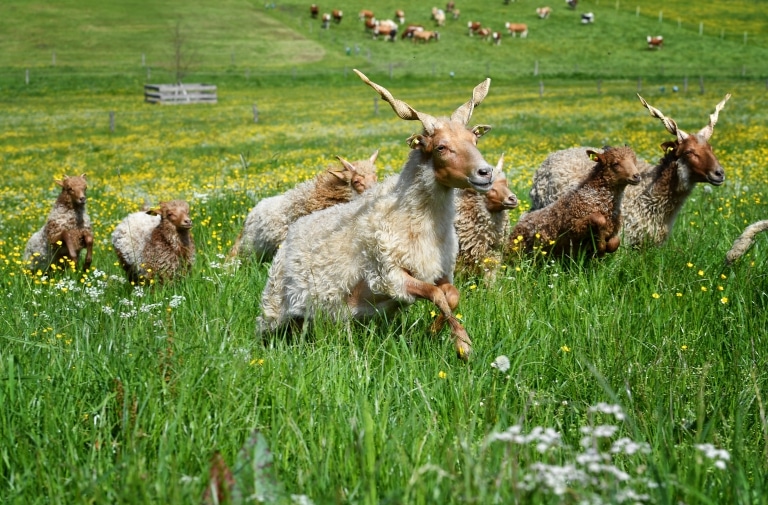
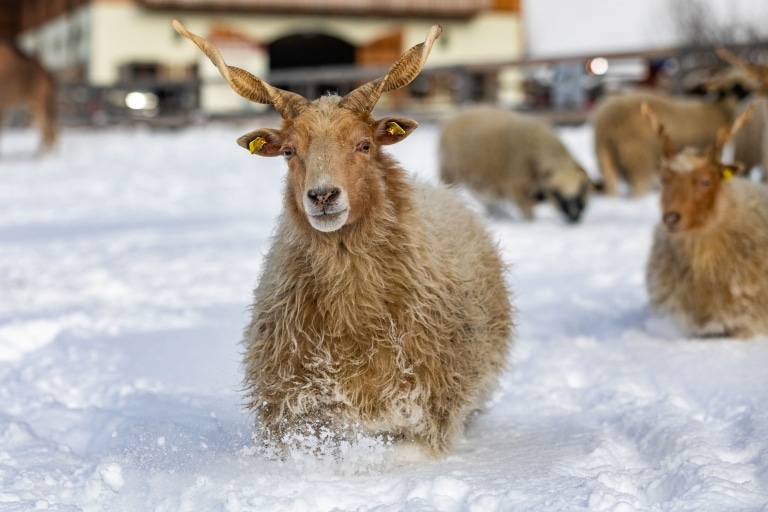
Woolly pig (Mangalitsa pig)
The Mangalitsa pig is a Hungarian pig breed characterized by curly, wool-like bristles. Few domestic pigs are still as densely coated as their ancestors, the wild boars. The piglets are striped like wild boar fries. There are three color types: Large-framed Blonde, Red Mangalitsa, and Swallow-bellied Mangalitsa. Their thick blubber coat and hair coat protect these hardy pigs from extreme weather. Therefore, they can live outdoors year-round if shelter and a mud hutch are available to them. The character of the woolly pig is very good-natured. If treated well, they are very trusting and also like to be touched.
The date of origin of the Mangalitsa pig breed dates back to the 1830s. Around 1890 there were nine million Mangalitsa pigs in Hungary. After the Second World War, the old breed experienced a new boom in Hungary because it was able to cope with the adverse living conditions. Until the 1950s, the Mangalitsa pig was the predominant breed in Hungary.
Why is the woolly pig threatened with extinction?
The Mangalitsa pig, as the leading fat pig, fed the population of the Austro-Hungarian Monarchy. From the 1950s, the demand for lean pork became greater and greater. As a result, the breeding of the Mangalitsa pig became economically unviable. The breed fell more and more into oblivion. At the end of the 1970s, the Mangalitsa pig was kept in Austria only in national parks and zoos or occasionally by small breeders for their own use. In the meantime, the woolly pig belongs to the endangered domestic animal breeds.
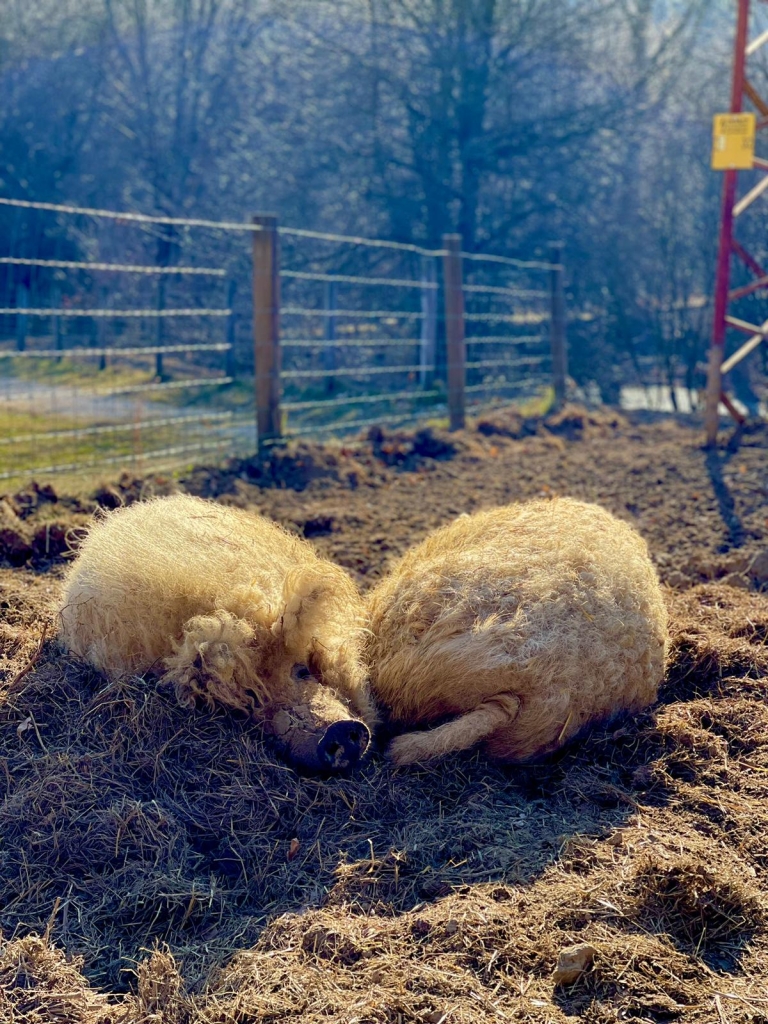
Hungarian gray cattle
Grey cattle is the name given to an old breed of domestic cattle from the Hungarian lowlands. The breed is particularly suitable for extensive grazing systems. The gray cattle probably came to the Hungarian lowlands in the 9th century with the immigration of the Hungarians from their previous homeland in the east. The Hungarian Grey Cattle is slender, large framed and high legged. The cattle are robust, undemanding, easy-bearing and long-lived. The horns, usually pointing straight up, are long, curved and flared. Bulls can have horns up to 80 cm long.
The coloration of the animals changes with the number of years of life. After birth, the calves are reddish-yellow, with different degrees of shading from light to dark. At the age of two to three months begins to turn gray. In adult gray cattle, various gradations from silver-white to ash-gray occur. Coat color can change with the season. In winter are darker and after the change of coat in spring, the color is most beautiful.
Why is the Hungarian gray cattle threatened with extinction?
Grey cattle are robust animals, which are not very suitable for indoor farming. This fact, combined with the demand for milk and dairy products, meant that the old breed was no longer "competitive" with other types of cattle.
